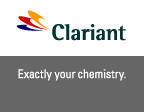Mar 17 2009
At the JEC 2009 in Paris from March 24 to 26, 2009, Clariant will present its comprehensive portfolio for composites. Visit Stand S38 to learn about the advantages of non-halogenated flame retardant systems, high-performance organic pigments, additives with optimized application properties, and the permanent anti-graffiti coating tutoProm®. Due to the ongoing demand for composites and materials with special properties, as well as new production methods and applications, the composite industry expects high interest again in this year’s event with 26,000 visitors and 1,000 exhibitors.

The superior strength of composites makes them a prime choice for airplanes, railway vehicles, automotives or satellites. For example, 25 percent of the Airbus A380 consists of composites while Boeing’s “Dreamliner“ 787 has roughly 50 percent composites. Due to the flammability of the materials, which are based on polyesters, polyamides, epoxy resins, and other polymers, fire protection is crucial in high-risk areas such as transportation, construction, and electric and electronic components.
With Exolit®, the Pigments & Additives Division offers is a pioneering product series for the effective fire protection of polyamides and polyesters. The phosphinate-based system offers numerous benefits. Even in low dosages, the highly effective, non-halogenated system complies with the most stringent fire protection classifications and key electrical standards. Its ecological compatibility and recyclability have been scientifically proven. In addition, the flame retardant system is compatible with the EU Directives WEEE and RoHS. In addition to the main fields of application – fiberglass-reinforced polyamides and polyester – the new generation of flame retardants has also shown its effectiveness in circuit boards such as FR-4, adhesives, sealants, and epoxy laminates. Thanks to their low density, the flame retardants can also be used for lightweight construction composite materials.
Exolit® AP is a flame retardant system based on ammonium polyphosphate (AP). Because of its foaming effect in case of a fire, it is also referred to as “intumescent”. Unlike conventional non-halogenated flame retardants, which are mostly based on aluminum trihydrate, the filler content can be reduced by 40 to 50 percent.
Exolit® RP are flame retardant systems based on red phosphorus that have established themselves in Europe for the fire protection of fiberglass-reinforced polyamides and casting compounds. With its high effectiveness, red phosphorous is especially advantageous because even in very low dosages, the highest fire protection standards can be met. The product is available as concentrates in different carrier materials. Unlike pure powder, the flame retardant is easy to process. With only 6 percent additive, the fire protection classification UL 94 V-0 can be reached without affecting the mechanical or electrical properties of the material.
tutoProm® was developed by Clariant for the protection and conservation of various surfaces in indoor and outdoor settings. The products are based on organo-polysilazanes, which are chemical compounds based on silicon, nitrogen, hydrogen and carbon. The transparent liquid is easy to apply and reacts at room temperatures with humidity, forming a dense, very thin, polysiloxane-like coating with excellent adhesive properties on different substrates. Possible substrates range from metals (untreated, polished, anodized, or coated) and plastics (including fiberglass-reinforced plastics) to technical textiles. tutoProm® dries fast and has pleasant haptic and visual properties. Depending on the formulation, the protective layers can also meet individual requirements. For example, the adhesion of graffiti colors, coatings, or other markings, is very weak, and, as a result, these unwanted substances are easily removed. With the anti-graffiti coating, new surfaces maintain their original appearance longer. Shorter cleaning times and minimized amounts of cleaning agents save costs and leads to reduced down time, wastewater and personnel costs. The German Railroad has been using the product in many of its cars to fend off graffiti attacks, including ICE 1 railway cars.